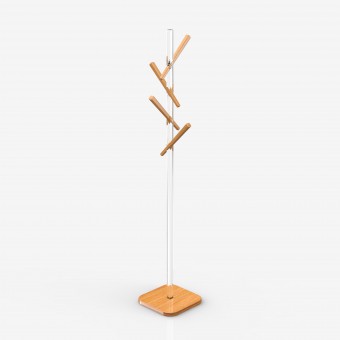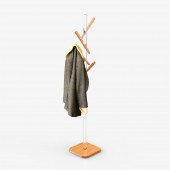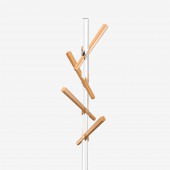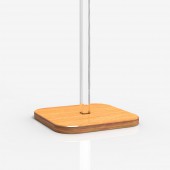
| THE AWARD |
| CATEGORIES |
| REGISTRATION |
| SUBMIT YOUR WORK |
| ENTRY INSTRUCTIONS |
| TERMS & CONDITIONS |
| PUBLICATIONS |
| DATES & FEES |
| METHODOLOGY |
| CONTACT |
| WINNERS |
| PRESS ROOM |
| GET INVOLVED |
| DESIGN PRIZE |
| DESIGN STORE |
| THE AWARD | JURY | CATEGORIES | REGISTRATION | PRESS | WINNERS | PUBLICATIONS | ENTRY INSTRUCTIONS |
Phantom Ii Magical Coat Rack by Yu Hiraoka |
Home > Winners > Design #44220 >Interview |
 |
|
FS: What is the main principle, idea and inspiration behind your design?
YH: Phantom II is a humorous coat rack which does a little 'trick' to customers. I mean it makes you see a phantom in your house!
FS: What are your future plans for this award winning design?
YH: I'm planning to showcase the prototype at a few important exhibitions. One will be the Milan Design Week next year.
FS: How long did it take you to design this particular concept?
YH: I came up with the basic concept roughly two years ago. And I have developed the idea and form.
FS: Who is the target customer for his design?
YH: Anyone who appreciates good minimal furniture, and someone who like a little humor in the house.
FS: What sets this design apart from other similar or resembling concepts?
YH: I think I have seen designs with same humorous concepts in table designs and stool designs, but I haven't seen one in coat rack design.
FS: How did you come up with the name for this design? What does it mean?
YH: Because of its clear stick, it can create an illusion that your coats on hooks look like they are in the air in a dark room as though you see a phantom there.
FS: Which design tools did you use when you were working on this project?
YH: A couple of different 3D software.
FS: What is the most unique aspect of your design?
YH: Aesthetic combination of wood and plexiglass.
FS: Who did you collaborate with for this design? Did you work with people with technical / specialized skills?
YH: I asked advice about production techniques from a big workshop. I had useful advice from them.
FS: What is the role of technology in this particular design?
YH: The CNC has a very big role to produce this furniture. I think that using CNC is still not a conventional thing to produce furniture in general.
FS: Is your design influenced by data or analytical research in any way? What kind of research did you conduct for making this design?
YH: I didn't do any proper research, but I did feel that composing furniture without screws or glues have gotten trendy.
FS: What are some of the challenges you faced during the design/realization of your concept?
YH: In my first design of this coat rack, the structure was fragile to function as a coat rack and after I came over it, the next problem was high production cost. I came over that, too. But I would face more challenges as I keep going further with this project. It's just a normal thing.
FS: How did you decide to submit your design to an international design competition?
YH: When I did the first rendering of this project, I instantly felt that it can win. Well, that's how I decided!
FS: Thank you for providing us with this opportunity to interview you.
A' Design Award and Competitions grants rights to press members and bloggers to use parts of this interview. This interview is provided as it is; DesignPRWire and A' Design Award and Competitions cannot be held responsible for the answers given by participating designers.
| SOCIAL |
| + Add to Likes / Favorites | Send to My Email | Comment | View Press-Release |





